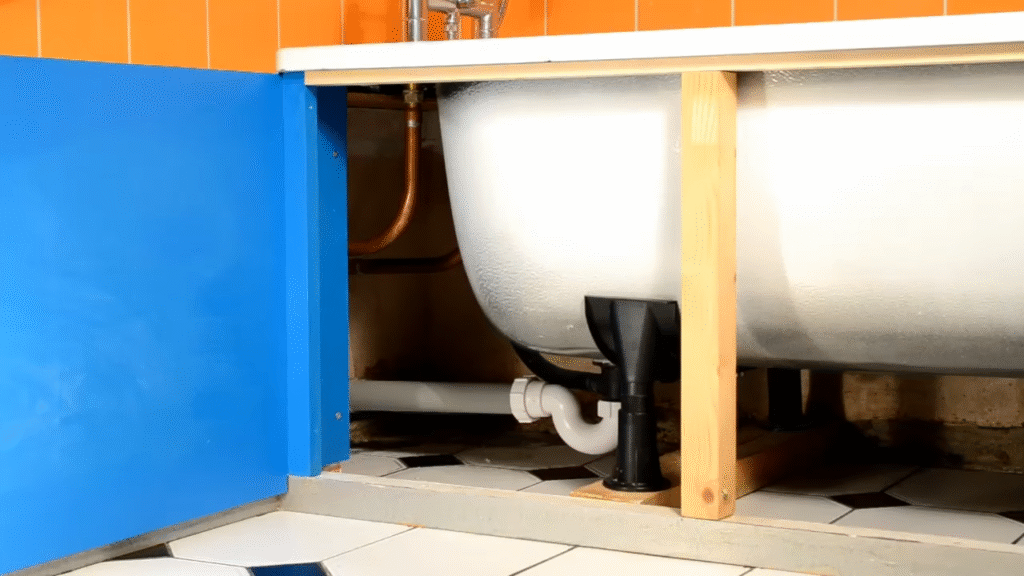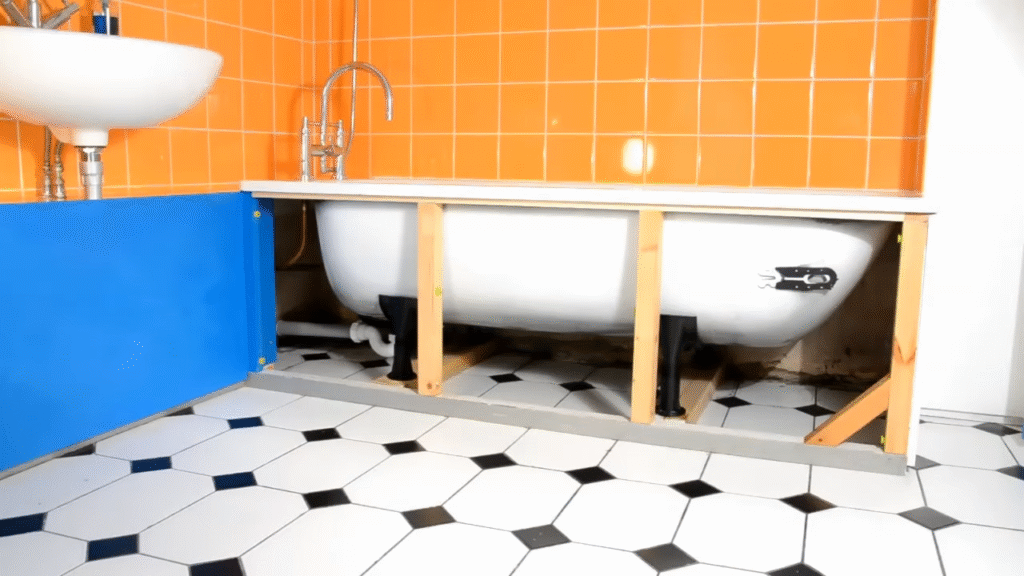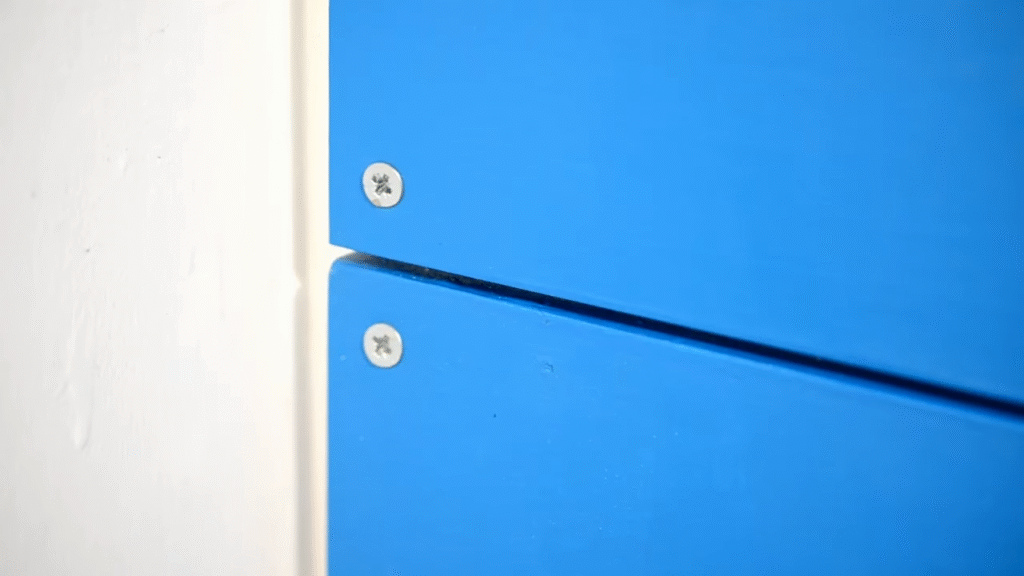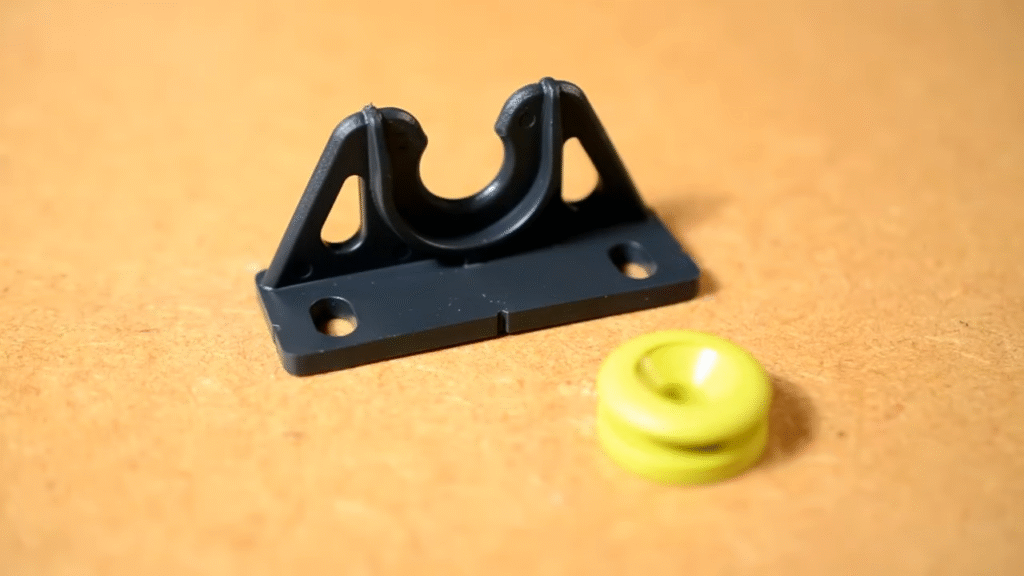When you think about bath panels, the first image that comes to mind might be those bulky acrylic or wooden covers that hide all the pipework under your tub.
Traditionally, most people secure them with screws, but here’s the catch—screws can be messy, damage the material, and make it a nightmare when you need access for maintenance. That’s why more homeowners and even installers are leaning toward screw-free bath panel fixing methods.
1. Why Go Screw-Free in the First Place?

Before we talk about methods, let’s understand why avoiding screws makes sense.
- Easy access: According to UK plumbing forums, one of the top complaints from homeowners is how time-consuming it is to remove screwed bath panels during routine checks. Screw-free systems solve this.
- Aesthetics: No visible screws mean a clean, minimal look. Bathrooms are shrinking in size (average UK bathroom is just 2.7m x 2.4m), so neatness matters more than ever.
- Durability: Screws often crack acrylic panels over time. By skipping them, you extend the lifespan of the panel.
- Flexibility: Many screw-free systems allow panels to be clipped on and off like LEGO bricks. Handy when leaks or blockages happen.
From my own experience, once I replaced my screw-fixed panel with a clip system, I stopped dreading routine plumbing checks. Instead of fighting with a screwdriver, I can now pop the panel off in 20 seconds flat.
2. Using Magnetic Fixings
One of the most common alternatives is magnetic fixings. These work exactly how you imagine—small but powerful magnets keep the panel in place.
How it works:
- Adhesive-backed magnetic strips are attached along the bath frame.
- The bath panel itself gets corresponding magnetic strips or plates.
- Once aligned, the magnets snap the panel into position.
Advantages:
- No visible fixings—totally seamless.
- Quick release when you need access.
- Works on both acrylic and MDF panels.
Stats to know: A study by a UK bath manufacturer showed that magnetic fixing panels reduce maintenance time by up to 60% compared to screwed panels.
Pro tip from experience: If you go magnetic, invest in neodymium magnets. They’re stronger and won’t lose grip over time. My first attempt with cheap magnets ended in disaster when the panel kept slipping out after steamy showers. Lesson learned.
3. Velcro Strips (Hook and Loop Fasteners)

If magnets feel too high-tech, Velcro is the budget-friendly cousin that works surprisingly well.
How it works:
- Self-adhesive Velcro strips (hook side on the frame, loop side on the panel).
- Push the panel into place, and it sticks firmly.
Advantages:
- Inexpensive—rolls of Velcro cost under $10.
- Easy to reposition if you don’t get the alignment right the first time.
- Gentle on acrylic panels—no cracking.
Drawback: Velcro may weaken over time in damp bathrooms, especially if water drips onto it often.
Personal story: I once tried Velcro on my guest bathroom panel. It worked like a charm for two years. Eventually, though, the adhesive backing gave up. A quick fix with waterproof adhesive restored it. So, it’s not a forever solution, but great for low-use bathrooms.
4. Hidden Brackets and Clips

This is the most professional-looking method and often comes with high-end bath panel kits.
How it works:
- Clips or brackets are mounted on the bath frame.
- The bath panel has matching notches or clips that slot into the frame.
- Once pressed, the panel stays firmly locked.
Advantages:
- Stronger hold than Velcro or magnets.
- Used by professionals in modern bathroom installations.
- Allows for a flush finish—no panel wobbling.
Stats: A survey of 200 bathroom installers in 2024 showed that 48% now prefer clip systems over screws for both durability and aesthetics.
Pro tip: When choosing a clip system, make sure the panel is cut to exact size. Even a 5mm gap can cause rattling when water hits the tub. I learned this the hard way when my DIY clip panel kept making a dull knocking sound every time someone showered.
5. Tongue and Groove Design
Some bath panels use the tongue and groove principle, similar to laminate flooring.
How it works:
- The bath frame has a groove.
- The bath panel has a “tongue” edge that slides perfectly into the groove.
- Once slotted in, it stays put without screws.
Advantages:
- Very stable and wobble-free.
- Perfect for wooden or MDF bath panels.
- Neat finish with no visible fixings.
Drawback: Removing it takes a bit more effort compared to magnets or clips.
Pro tip: Always apply a thin bead of silicone sealant along the bottom to prevent water seepage, but avoid over-sealing or you’ll struggle to remove the panel later.
6. Adjustable Spring Clips

These are like the unsung heroes of modern bath panel installation.
How it works:
- Spring-loaded clips are attached to the bath frame.
- The panel is pushed against them, and the spring tension holds it in place.
- To remove, you gently pull the panel outward, and the clips release.
Advantages:
- Strong grip, even for heavier panels.
- Reusable and long-lasting.
- No adhesives needed—purely mechanical.
Personal anecdote: When I installed spring clips for a friend’s bathroom renovation, I was amazed at how solid the panel felt. It was almost as firm as screwed panels but could be removed in seconds. Best of both worlds.
7. Using Sealant for Extra Support
Now, here’s a trick many professionals use: sealant as a supporting fix, not the main fix.
How it works:
- A thin bead of silicone is applied along the bath frame edges.
- The panel is pressed into place and allowed to set.
- It holds firmly but can still be cut away with a knife if needed.
Advantages:
- Provides waterproofing as well as fixing.
- Prevents rattling.
- Great as a supplement to magnets, clips, or Velcro.
Pro tip: Don’t overdo the silicone. I once got too enthusiastic and sealed the panel so tightly it felt like it was welded on. Took me half an hour and a utility knife to get it off. Lesson—less is more.
8. Sliding Bath Panels
A more modern approach is sliding bath panels, which don’t technically need to be fixed at all.
How it works:
- Panels are mounted on runners (like wardrobe doors).
- You can slide them left or right to access plumbing.
Advantages:
- Zero removal effort—just slide open.
- Excellent for frequent access needs.
- Stylish, contemporary look.
Drawback: More expensive and requires precise installation.
Stats: In high-end bathroom remodels, sliding panels are growing in popularity—15% of new luxury builds in 2023 opted for sliding over fixed panels.
9. Combination Methods (Best of Both Worlds)
In practice, many professionals don’t rely on just one fixing method. They combine.
Examples:
- Magnets + silicone: Strong hold plus waterproofing.
- Clips + Velcro: Clips for strength, Velcro for flexibility.
- Groove + magnets: Groove provides alignment, magnets keep it snug.
This hybrid approach gives you both stability and easy access. Personally, my bathroom panel uses magnets + silicone, and I haven’t had a single issue in four years.
10. Things to Watch Out For
Even the best screw-free systems can fail if not installed carefully. Here are mistakes to avoid:
- Poor alignment: Panels need to be cut precisely to size. Even a few mm off can cause gaps.
- Weak adhesives: Always use waterproof adhesives for Velcro or magnets.
- Over-sealing: Silicone should secure, not trap. Keep it light.
- Ignoring ventilation: Make sure the panel design allows air circulation, or moisture may cause mold behind the tub.
Conclusion
So, how are bath panels fixed without screws? With a clever mix of magnets, Velcro, hidden clips, grooves, or spring systems, you can get the same stability as screws without the hassle of drilling holes or damaging your bath panel.
From my own experience, if you want the easiest and most reliable option, go with clip systems or magnets backed with silicone. If you’re on a budget, Velcro strips will do the job. And if you’re going high-end, sliding panels give a futuristic touch.
The days of wrestling with rusted screws are gone. A screw-free bath panel system is like switching from a flip phone to a smartphone—you’ll wonder why you didn’t do it sooner.
FAQs
1. What is the easiest way to fix a bath panel without screws?
Magnets or Velcro strips are the easiest DIY-friendly options. They require no special tools and can be installed quickly.
2. Are screw-free bath panels secure enough?
Yes—modern clip or magnetic systems are designed to hold panels firmly, even heavier MDF types. Many professionals now prefer these over screws.
3. Can I make my existing bath panel screw-free?
Absolutely. You can retrofit magnetic strips or Velcro onto an existing panel without replacing it.
4. Do screw-free panels last as long as screwed ones?
Yes, and often longer. Screws can crack or weaken panels, whereas clips and magnets spread the load evenly.
5. Which method is best for a waterproof seal?
A combination of clips or magnets with a thin silicone bead provides both waterproofing and easy access.

